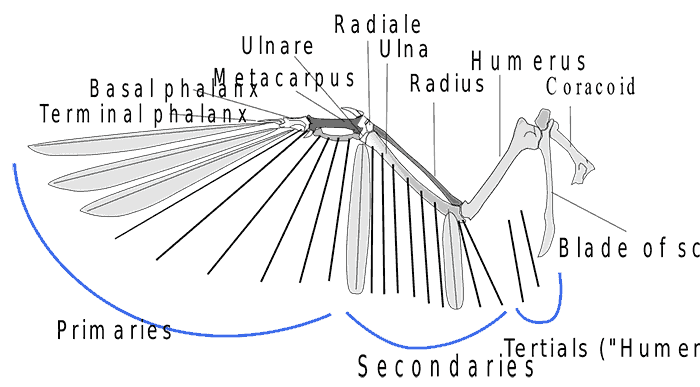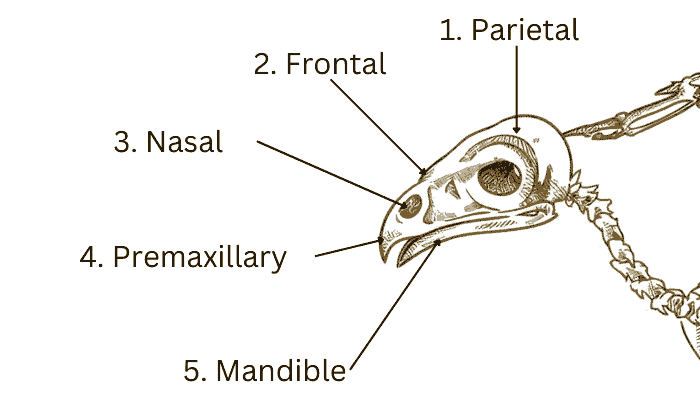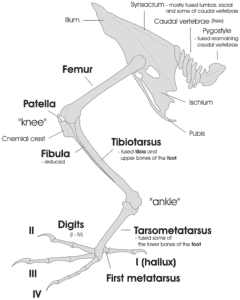Birds are interesting to look at, especially soaring over the sky. But do you know what gives birds their ability to fly?
It is because of their lightweight bones. Their skeletal systems, also known as avian skeletal systems, undergo changes depending on the purpose for which they were created.
How many bones does a bird have? Well, it depends on the species of the bird. On average, there are 200 bones in a typical bird’s body.
Learning the bird skeleton anatomy is important to fully grasp the science behind what makes up a bird. If you are ready to learn, read along with this article.
Table of Contents
The Number of Bones in a Bird
Every bone in a bird’s body works together smoothly to support the bird’s flight. Roughly 20% of the overall weight of a bird is its bones. However, some species have less or more bone count than others.
The exact number of bones varies depending on what species it belongs to. Also, its habitats, flying patterns, and evolutions can affect the number of bones a bird can have.
For example,
- Eagle: 206 bones
- Owl: 14 neck bones (humans have 7 neck bones)
- Duck: 122 bones
- Parrots: around 13 to 25 bones
- Ostrich: 56 bones
The skeletal system of birds consists of axial and appendicular skeletons.
1. Axial Skeleton
It serves as the main structural component of the bird’s body. It consists of:
- Skull
- Ribcage
- Vertebral column
2. Appendicular Skeleton
The appendicular skeleton comprises the limbs and associated girdles. It helps the birds to perform its daily activities.
- Wings
- Sternum
- Pelvic girdle
- Hind limb
- Pectoral girdle
If you curious enough about which body part of a bird contains what bone structure, the following are the bones in each major part of a bird:
Bird’s skull
The skull of the bird is made up of five primary bones. These are:
1. Parietal
2. Frontal
3. Nasal
4. Premaxillary
5. Mandible
Bird’s body
The bones in a bird’s body provide support and rigidity for its growth. The bones that make up its body are:
6. Cervical vertebrae
7. Thoracic vertebrae
8. Lumbar and sacral vertebrae
9. Caudal vertebrae
10. Furcula
11. Thoracic ribs
12. Scapula
13. Coracoid bone
14. Ilium
15. Pubis
16. Ischium
17. Pygostyle
Bird’s wing

The wing bones of birds are uniquely structured for different species based on how they fly and move around. The main bones of the bird’s wing is:
18. Coracoid
19. Clavicle
20. Scapula
21. Radius and ulna
22. Carpal bones
23. Digits
24. Carpometacarpus
25. Humerus
Bird’s leg
The bird’s leg gives balance to birds and allows them to walk and carry out other functions. Its skeletal structure is made up of:
The bird’s pelvic girdle:
26. Ileum
27. Pubis
28. Ischium
The bird’s leg:
29. Femur (the thigh of the bird)
30. Fibula
31. Patella
32. Digit II (toes)
33. Digit III
34. Digit IV
35. Tarsometatarsus
36. Metatarsal bones
Skeletal Adaptations for Flight
Each of the bones of the birds helps them to function, just like other animals on Earth. Their bones consist of cavities that are air-filled, which makes them lightweight.
Birds use their bones mostly for flying, Which helps them use less energy during takeoff and prolonged flight.
Other functions of bird bone structure are to:
- It supports the internal anatomy, such as their hearts, brains, and lungs.
- It protects sensory organs.
- It preserves the body’s calcium homeostasis.
- It keeps the structure of the body’s stem cells used to develop into leukocyte cells.
- Mother birds use calcium from their bones to produce their egg
- It strengthens the bird’s flight.
Unique characteristics of bird bones:
- The birds’ small skulls allow them to soar with ease.
- Birds do not have teeth but rather have beaks that are lighter than teeth.
- The collarbone of birds is joined together such that it is connected to a portion of the muscles involved in flying.
- Birds have hollow bones, which help to reduce the weight of the body and, at the same time maintain its strength.
Conclusion
In summary, “How many bones does a bird have” leads to a fascinating discussion of avian anatomy.
Although the exact amount of bones might vary, each one contributes significantly to the bird’s remarkable ability to fly and support its legs.
With their many shapes and roles, birds provide priceless insights into the world’s splendors and life.
Therefore, use the sight of a bird in flight to serve as a reminder of the beauty of nature whenever you are in awe of it.

As many can agree with me, birdwatching is a thrilling and calm hobby at the same time. Such trips to the parks into deeper parts of the jungle bring me enormous joy seeing the birds through my naked eyes or high-quality camera and binoculars. So, to make such a hobby even more enjoyable to you, beginners or not, I opened this space called Thayerbirding.

















